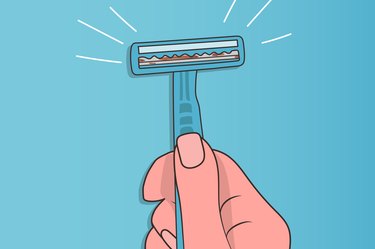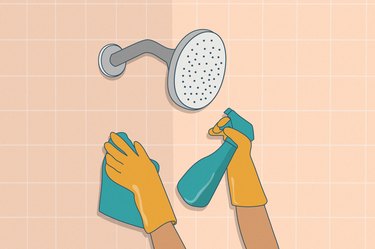
Quick survey: When was the last time you replaced your razor? Last week, last month, last year (gulp)?
We get it: We can all become a little lazy about buying new blades. But shaving with an old, dull or rusty razor can be a real problem for your skin.
Video of the Day
Video of the Day
Here, we spoke with board-certified dermatologist Lauren Ploch, MD, MEd, to learn how shaving with a not-so-fresh razor can sabotage your skin health (and how often to banish battered blades for shiny new ones to avoid any issues).
4 Effects of Shaving With an Old Razor
1. It Can Result in Razor Burn
Always get an itchy, tender red rash after shaving? You might want to think about the last time you replaced your razor.
Otherwise known as razor burn, this skin irritation is frequently caused by shaving with a blunt blade.
"As a blade dulls, it does not cut uniformly along the length of the blade," Dr. Ploch says. "This results in an uneven shave that can lead to razor burn."
2. It May Lead to Ingrown Hairs
Like razor burn, ingrown hairs (those that curl down and grow back into the skin) are often the outcome of shaving with an old blade.
Again, an unsharpened razor won't remove hair evenly and can irritate the skin, increasing your chances of developing those pesky little razor bumps.
"Also, people tend to make more passes with a dull razor than a sharp one, exacerbating this condition," Dr. Ploch says.
3. You're More Likely to Nick Yourself
Ironically, you have a greater risk of cutting yourself with a blunted blade than a super-sharp one.
Here's why: A dull razor tugs at your skin (rather than smoothly gliding over it to get rid of hair).
And an old "blade can also undergo chipping, which isn't necessarily visible to the naked eye," Dr. Ploch says. A chipped razor's edge means your strokes will likely be patchier, producing an uneven shave that can cause cuts.
4. It Can Cause a Bacterial or Fungal Infection
"Because razors tend to live in warm, humid environments like bathrooms, they're the perfect hosts for fungi and bacteria," Dr. Ploch says. And the longer you keep them, the greater the number of creepy crawlies that'll accumulate on the blade.
"This, mixed with the increased risk of cutting yourself from a dull, uneven razor blade, increases our risk of infection," Dr. Ploch explains.
Double that if you're sharing the razor with someone else. Razors can transfer bacteria from one person's skin to another, and that bacteria could cause problems if it finds its way inside a cut.
To minimize microbial growth (and your odds of infection), don't share your razor with anyone else and store it in a cool, dry place "store razors in a cool, dry place [i.e., not the bathroom where water tends to collect or puddle]," Dr. Ploch says.
Tip
So, how can you tell if you have a razor-induced infection? “Skin infections are often red, scaly, crusty and/or oozing a pinkish yellow fluid,” Dr. Ploch says.
If you’re experiencing these symptoms, skip the over-the-counter antibiotic topical medications. Instead, clean the area with a gentle soap and water, then call your doctor who can take a culture and prescribe an appropriate antibiotic if needed, she says.
How Often to Replace Your Razor
"How often we should change our razors depends on how often we shave and the size of the surface area that we are shaving," Dr. Ploch says.
A general rule is to replace razor blades after five to 10 shaves (or more frequently if you shave bigger body parts every day), she says.
In other words, if you're covering large patches of skin (read: your legs) with each daily shave session, the blade will become blunted more quickly and will need to be replaced more regularly.
How to Clean Your Razor
A clean razor can help reduce your risk of infection. And all it takes to keep it hygienic is a little H2O.
"I recommend rinsing razor blades after each 'swipe' while shaving and then rinsing very well after each use," Dr. Ploch says.
And don't rub the blade on a sponge or towel, which can make it dull faster, Dr. Ploch says. Instead, gently pat the handle to flick off any excess water and let the razor air dry after each use.
What about a disinfectant? "Alcohol can help to decontaminate a blade, but wiping the blade can damage it," Dr. Ploch says. "Again, it's more important to change the blade out regularly and rinse it after use."
So, How Bad Is It Really to Shave With an Old Razor?
No good can come of shaving with an old, rusty razor. At worst, it can irritate your skin and cause an infection. At best, you won't get the smooth shave you're after. That's what we call a lose-lose situation.
So, do yourself a favor: Ditch the dull razor and start fresh with a sharp blade. Your skin will thank you for it.
Is this an emergency? If you are experiencing serious medical symptoms, please see the National Library of Medicine’s list of signs you need emergency medical attention or call 911.



